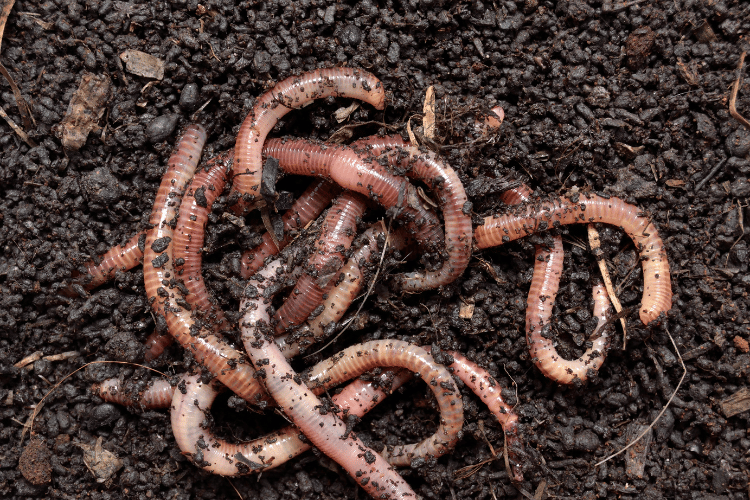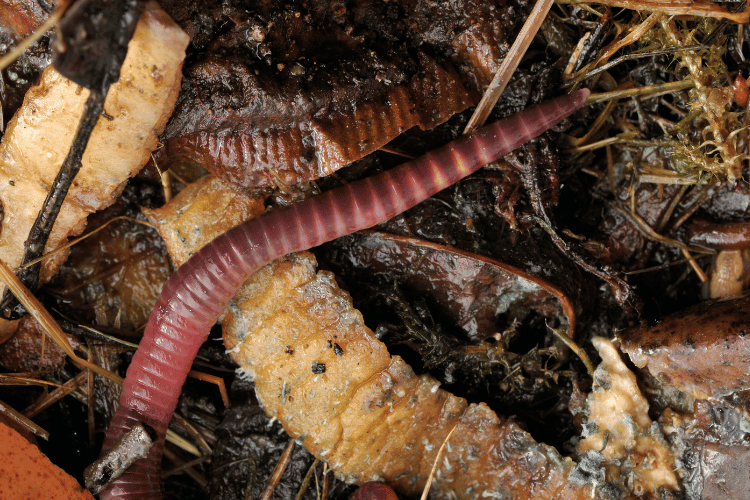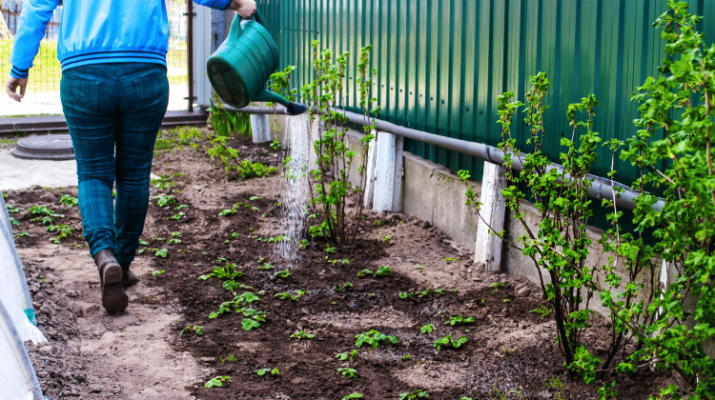Worms, while repulsive to some, are some of the most essential biological life in gardening. They serve practical purposes that can determine the success of your garden crops.
Adding them to the mix of your plant beds provides many benefits. These wiggly creatures are adept at improving the soil’s structure, aeration, and moisture retention.
However, deciding which type of worm to add to your garden can be confusing. After all, there are over 20,000 species of these slithery critters!
That said, we made this post to help with your gardening goals. So, keep reading, and let’s discuss the best worms for raised garden beds—their types, uses, and benefits.
Best Worms for Garden Beds
While thousands of worm species exist, you can use only a handful for gardening. Here are the five best worm types to add to your garden projects to ensure healthy soil and crops.
1. Earthworms (Lumbricus Terrestris)
These worms are considered to be the most common species. People also call them common earthworms because you can find them in virtually every type of garden soil.
In the US, people refer to these worms as “night crawlers.” And if you’re fond of fishing, you’ve probably seen and handled one or two of these critters.
Nightcrawlers originally came from Europe. However, as Europeans traveled, they brought soil and earthworm eggs, spreading the worm species across US and Asia.
Earthworms are the usual go-to when gardeners want to improve their garden soil. These worms exist virtually everywhere, so they’re much easier to procure.
Appearance
One marker of a common earthworm is its segmented body, called annuli. They’re invertebrates that can live up to nine years, depending on the quality of their environment.

The color of common worms usually ranges between pale white and dark brown. Their bodies can stretch up to 14 inches long and weigh around 40 ounces.
Behavior
The name “nightcrawler” came from the earthworm’s feeding behavior. They’re nocturnal, so they typically burrow underground during the day and feed at night.
These creatures can burrow as deep as 6 feet below the ground. This capability makes them suitable for outdoor gardens as it enables them to survive fluctuations in the weather.
Types
Some people find it surprising that there are several types of worms. In the US alone, you can identify over 100 different species of earthworms.
Moreover, earthworms can be divided into three classifications: epigeic (above ground), endogeic (topsoil dwelling), and anecic (underground). It’s best to use endogeic and anecic earthworms for garden beds as they’re more active.
2. Red Worms (Eisenia fetida)
Red worms (also called manure worms, trout worms, and red wigglers) are a type of earthworm. However, people typically use them for composting purposes.
These worms are masters of breaking down organic matter and producing nutrient-rich substances. As such, they can be beneficial to introduce to your raised garden beds.
However, redworms can be picky when it comes to their environment. And they also need enough organic matter to feed themselves with to be happy.
So, you can’t simply move them around and expect them to survive or stay. Still, with little garden modifications, they can improve your garden soil’s quality, like common earthworms.
Appearance
One distinguishing feature of red worms is their highly-emphasized annuli. The rings are lighter in color, typically alternating between pink and red.
Their color slightly differs from that of nightcrawlers, with their reddish-brown skin. Some varieties also show streaks of purple in the areas near their mouths.
This species is shorter as well, with body length averaging between one to five inches. They can live for up to 5 years, depending on their environment.
Behavior
Like most earthworms, red worms are nocturnal and feed at night. They eat organic materials, like dead plants, leaves, and animals.
Red worms prefer to stay near the surface, closer to their food source. As such, you’ll typically find them just under the topsoil and below fallen leaves and dead logs.
Redworm: Tips
As red worms thrive in organic-rich conditions, you should modify your raised garden bed to cater to them. Remember: dirt alone won’t satisfy these critters.
Try adding plant scraps and other organic materials to your garden bed. Compost trenching can also encourage these worms to stay and live in your garden soil.

Introducing Worms In Your Raised Garden Beds
While worms offer several benefits to any garden, there are some considerations you should take when thinking about adding them to your raised garden beds.
You can’t simply toss them into your garden and expect them to work the soil. In fact, some raised beds may not even be suitable for garden worms.
Raised Garden Beds on Concrete
Your raised garden bed’s location is a crucial factor. Enclosed beds on concrete, for instance, won’t be able to provide the optimal conditions for earthworms.
Still, it doesn’t mean you can’t add worms to your raised garden.
Red worms are your best option when dealing with enclosed garden spaces. These slithery creatures dwell near the surface, so you won’t need a deep raised garden bed.
Just be sure to provide them with enough food, as they have a voracious appetite. They aren’t picky eaters and will happily consume kitchen scraps, grass, leaves, and manure.
Raised Garden Beds on Loamy Soil
Raised garden beds with open bottoms on loamy soil are the ideal setup for earthworms. It allows them to burrow deep, which solves most issues they encounter.
An enclosed bed without access to deep soil will obstruct earthworms from burrowing. This issue can cause less soil activity, turning your worm project moot.
Another issue for enclosed garden beds is their temperature. Earthworms can survive within a specific range of temperatures, and these spaces can become too hot in the summer.
Rain is another problem you have to deal with in shallow and enclosed raised gardens. Too much rain can pool the raised bed and drown the earthworms.
Adding the Worms to Your Garden Bed
So how do you add worms to your raised garden soil? The quickest way is by hand, though you’ll need to ensure they’re comfortable in their new home.
Follow these steps when placing worms in your garden:
- Take a hand shovel and dig small holes across your garden bed.
- The openings should at least be around five to ten inches deep.
- Place a generous amount of compost inside the holes.
- Take a hand sprinkler and moisten the area.
- Add your worms and lightly cover them with soil.
Other gardeners also utilize vermicomposting to invite worms into their gardens. It’s a method of composting organic matter using worms as the primary catalysts.
It raises the odds of keeping them in the garden. And it provides gardeners with nutrient-rich compost, an excellent soil amendment for growing seeds and plants.
Benefits of Using Garden Worms for Raised Beds
Worms are crucial to maintaining soil health. But what specific areas of gardening do they help?
Soil Aeration
The soil’s airflow is one aspect improved when introducing worms to your raised garden bed. As they tunnel through your garden soil, they create openings for air to seep through.
More importantly, these tunnels allow air to reach the plant’s roots. This aeration effect promotes root growth, increases photosynthetic capabilities, and reduces plant death rate.
Soil Structure
Do you want to improve your garden soil’s fluffiness? Then you really need to consider introducing worms to your raised garden beds.
Worm activity loosens the soil by constantly moving underground. It helps plants better anchor their roots to the ground by providing space to spread and extend.
Soil Fertilizer
Aside from aeration and structure, worms add vital nutrients to the soil. Worms feed primarily on organic matter, including decaying leaves, crops, and animals.

Because of their food choice, worms produce castings prized for their fertility. Worm excretions are highly nutritious to plants as it contains iron, sulfur, magnesium, copper, and calcium.
Improves Drainage
One problem commonly associated with raised garden beds is poor drainage. The enclosed dirt, especially clay soils, will eventually settle and harden, affecting its ability to absorb water.
Putting worms in charge of tilling and adding soil amendments are some of the best solutions to clumped garden soil. According to NSW, zero-till soils with high worm populations drain six times better than cultivated soils!
Organic Decomposition
Households with no compost bins can appreciate worms in their garden beds well. They can take care of anything organic and turn them into valuable compost.
Most worms can eat their own body weight in a single day. So, if you have one kilogram of worms wiggling in your garden bed, expect them to consume the same amount of organic food.
How to Keep Your Garden Worms Happy
Keeping garden worms happy is essential to their productivity. They produce more castings with better quality when provided with an optimal environment and food source.
Moisture
Although terrestrial dwellers, worms need their fair share of moisture. These critters don’t have lungs, so they need water to breathe through their unique skins.
Your garden bedding should have at least 60% to 80% moisture content. The soil should be moist but not dripping, similar to how a wrung-out sponge feels in hand.
Airflow
Proper airflow is another vital aspect of an earthworm’s survival. As you may already know, these slithery creatures also need oxygen as much as mammals.
Regularly turning your garden soil is good practice to help the worms and plants. It’s best to avoid materials that easily clump, such as clay soils, to maintain the soil’s airflow.
Food
The food source is one of the most important factors keeping worms in one place. As such, try giving them as much food and as regularly as you can.
Worms will gobble fruits, vegetables, and plant materials. Don’t feed them too much or too often, though. A handful of kitchen scraps a week should suffice for newcomer worms.
Here’s a list of fruit you can give your garden worms:
- Pumpkins
- Cucumbers
- Apples
- Carrots
- Berries
- Melons
- Tomatoes
- Banana
Temperature
The temperature of your raised garden should match the needs of your worms. So you’ll need to examine the placement of your garden bed before throwing the critters in.
Earthworms prefer spots under shade with temperatures ranging from 40° to 80° Fahrenheit or 5° to 26° Celsius. Red worms, on the other hand, thrive on temperatures between 55° to 77°F.
Space
As curious as it sounds, worms prefer to hunt for their food. They like to stretch and wiggle around and they need enough space to do so.
That said, some gardeners make it a habit to bury worm food in different spots every week. This method keeps them moving, which helps improve soil health.
Frequently Asked Questions
Is It Necessary to Add Worms in Garden Beds?
While highly recommended, adding worms to garden beds isn’t necessary. It’s also possible to have healthy soil without the help of our wiggly friends.
Look at your garden soil’s quality before thinking about adding an amendment. If plants can grow without problems, you may do well without worms.
Can I Use Compost Worms for Garden Beds?
Red worms are a type of compost worms gardeners can use in garden beds. They can aerate, soften, and produce nutrient-rich castings for the soil, like common earthworms.
However, these creatures won’t thrive on dirt alone. You’ll need to actively care for them by giving them enough organic matter to feed on.
Where Can I Procure Worms for Garden Beds?
Fortunately, getting your hands on worms is easy. You can get them for free using a hand shovel and digging around your yard.
Although, you can still purchase them if you don’t know how to gather them by hand or don’t have the time to. Local online stores, garden centers, and worm farms usually sell worms.
Final Thoughts
Worms are beneficial creatures to have in your raised garden beds. You’ll need to look out for them, but they’ll also look out for your plants and crops.
Earthworms are basically synonymous with healthy and nutrient-rich soil. So, these critters crawling around your garden means you have healthy crops ahead of you.

